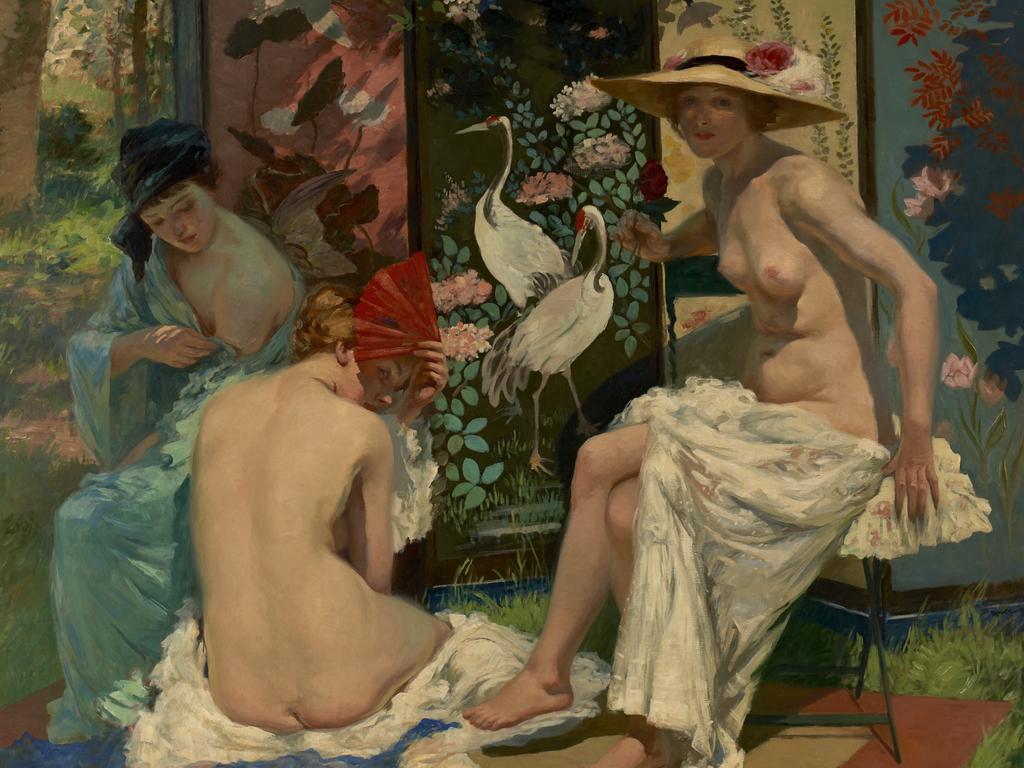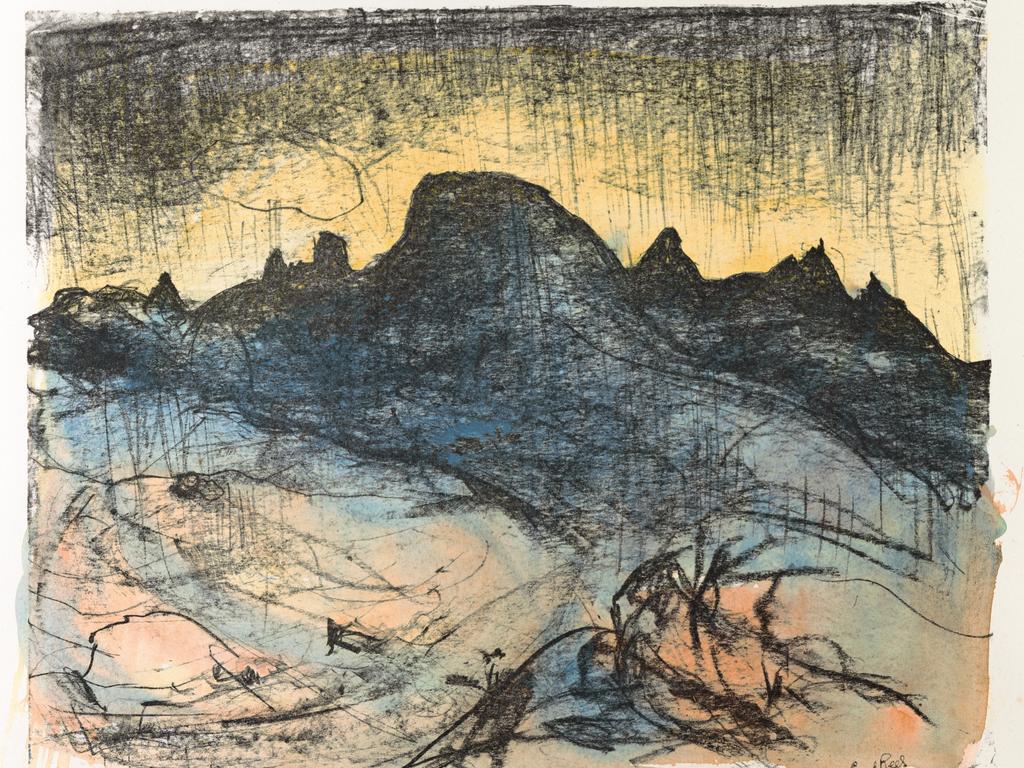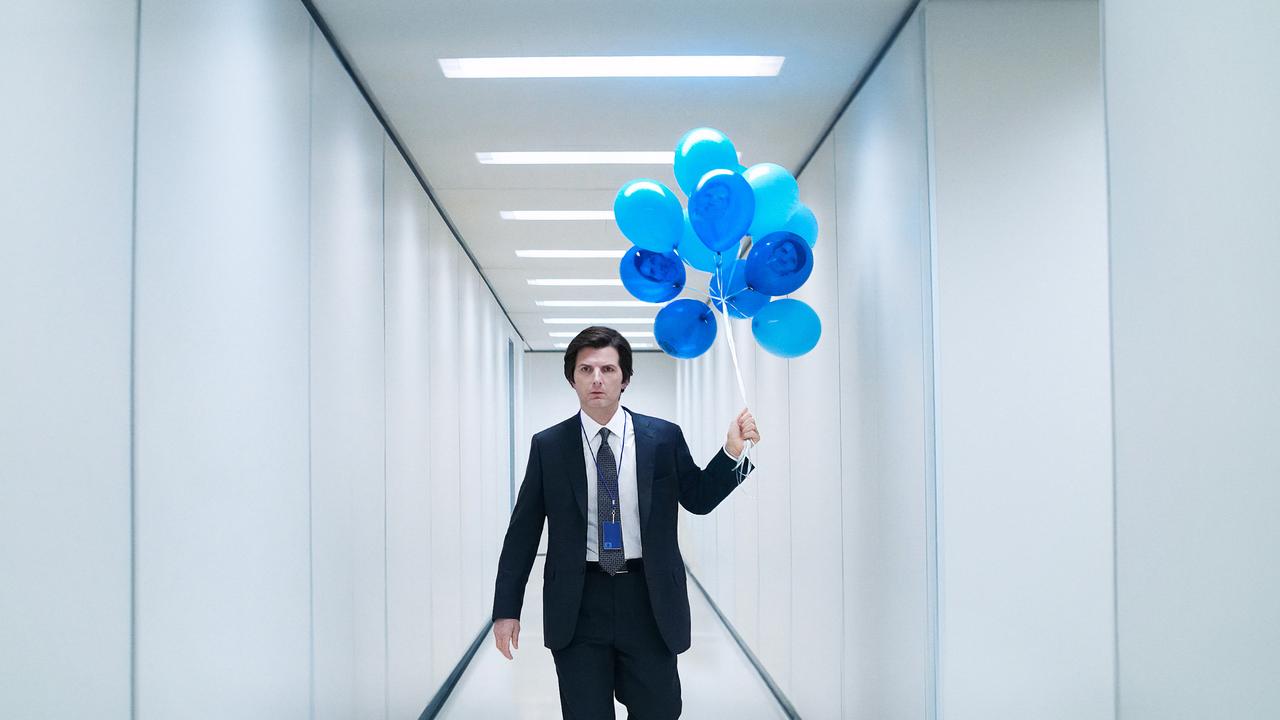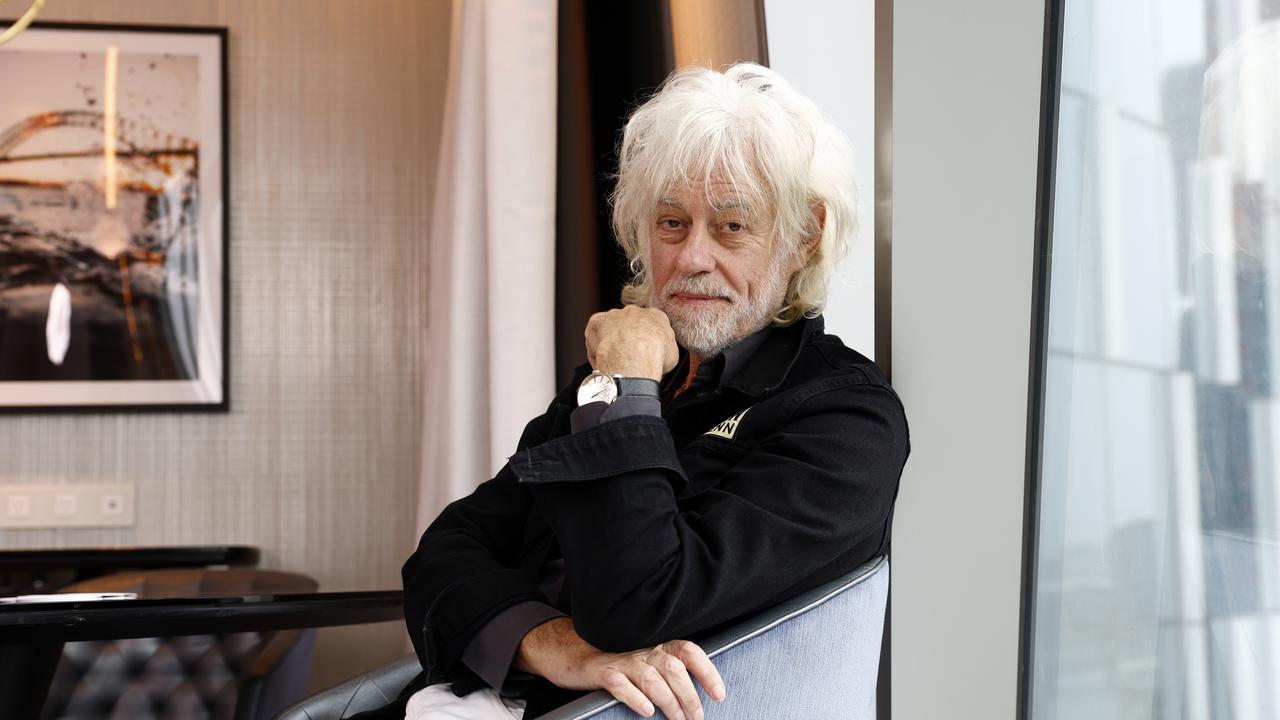‘Lindy, I want you to be as ambitious as possible’: Lee’s $14 million masterpiece
The National Gallery of Australia has unveiled its most expensive ever acquisition. But is Lindy Lee’s Ourorobos worth the multimillion dollar price tag, and will it stand the test of time?
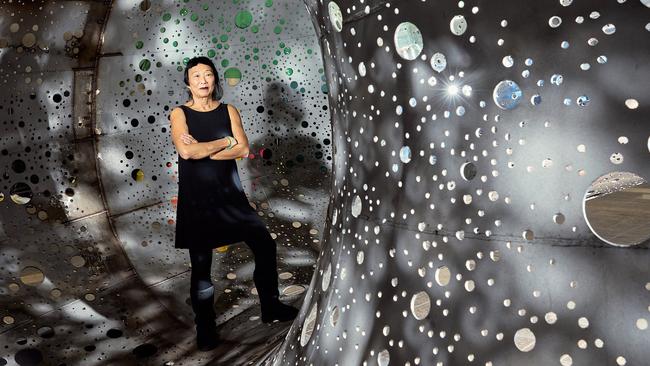
Even in a land of serpents – both real and mythological – it was an unusual sight. A 13-tonne silvery leviathan wending its way south from Brisbane to Canberra: an onerous 2000km journey by asphalt that saw street signs uprooted and traffic laws creatively reinterpreted.
For artist Lindy Lee it would prove the crescendo of the most extraordinary journey in her creative life – the artist’s most challenging commission – unveiled on Thursday – and, at $14m, the National Gallery of Australia’s most costly in its four-decade history. And here she found herself, 70 years of age in a heavy hauler riding shotgun in high-vis. “It’s been quite a trip,” she chuckles.
Lee finds herself on yet another odyssey, one that has featured an impromptu meeting with Queen Camilla and now has her lost in the subterranean tangle of corridors at the NGA. She finally spots a door. “Ah, the light,” Lee sighs with relief, pushing through a service exit and into a mottled Canberran afternoon sunshine.
Light is at the very kernel of Lee’s creative practice: or, more definitively, illumination. Born in Brisbane in 1954 to hardworking Chinese migrants at a time of post-war racial tension – “it wasn’t a completely cheerless childhood” – Lee gravitated towards traditional Western motifs of portraiture in her early career: a survivalist reflex to living in a country that until 1973 maintained the malevolent White Australia policy.
Lee would examine this existential paradox of authenticity and belonging with her repurposing of the photocopier as an unconventional medium of creative output (“What’s real and what’s not?”). Her forays into sculptural practice – steel fabrications embraided with ornate carvings – would endow her a wider audience, her works increasingly informed by the traditional spiritual foundations of Taoism and Zen Buddhism. Life, death and rebirth – the perpetuity of all things.
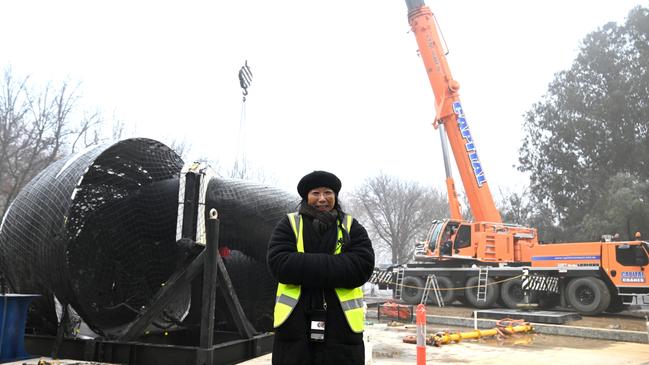
“Ever since I was a little girl of about three, this terrible thing called death really worried me, when I found out things stopped existing,” Lee begins, pausing on reflection. “What was the point of existence if it all ends in death and annihilation? This is the deepest question that’s driven my work.
“Now I’m 70 I know: we are all part of something much vaster. People might call this vastness God – I don’t care what you call it. All I know is there is something bigger than us, that is intrinsic to us, and we are intrinsic to it. We participate in cosmos as much as cosmos is a part of us.”
This cosmic purview would first manifest when Lee was a child, in observing the suspended motes of dust in the generous ribbons of Queensland sunlight reaching through the curtains – while her father crafted furniture in the shed and her mother tended to her rooftop garden. For Lee, this sense of celestial awe provided her a connection to all of humankind since time immemorial. As well as a useful motif for exploring Lee’s own unresolved sense of identity as a Chinese Australian – perpetually suspended between realms – the cosmic equally incites wonder in people of all cultures and ages.
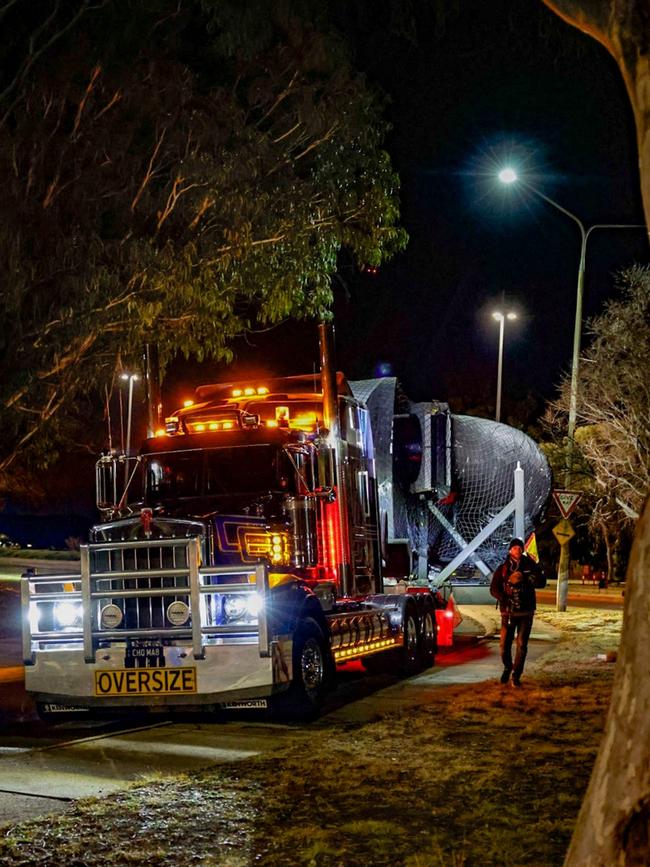
“I talk of cosmos as the length, depth and breadth of everything that has existed, exists right now and exists into the future,” the artist continues. “Belonging is our birthright. I am also Chinese and grew up during White Australia so that sense of belonging – or not belonging – was very painful. Right now, at 70 I finally understand that we all belong.”
While in Australia Lee is best known for her gallery works – moulds, metal carvings and photographic abstractions, many of which were collated for 2021’s career survey, Moon in a Dew Drop, at the Museum of Contemporary Art in Sydney – in Asia her reputation has gone stratospheric with her prominent public sculptures, each one equally futuristic as primordial. Interconnected by an ethereal matrix, these seamless stannic spheres – including One Bright Pearl in Shanghai, Tower of 10 Billion Stars on Hainan Island and Eye of Infinity in Hong Kong – irradiated with brocaded astrological iconography, silently searching both inward and out.
In his ultimate acquisition as director of the Art Gallery of South Australia in 2018, Nick Mitzevich would steward the purchase of Lee’s 6m Life of Stars: its burnished steel carapace hand-punctured by 30,000 holes illuminated from within to resemble a celestial atlas of our galaxy.
On his appointment as the director to the NGA in 2018, Mitzevich and his team were charged with commissioning a legacy work to commemorate the institution’s 40th anniversary in 2022.
“Nick summoned me to Canberra and stood at the position where the Ouroboros is now and said: ‘Lindy, I want you to be as ambitious as possible’,” Lee recounts. “So that’s where it started.”
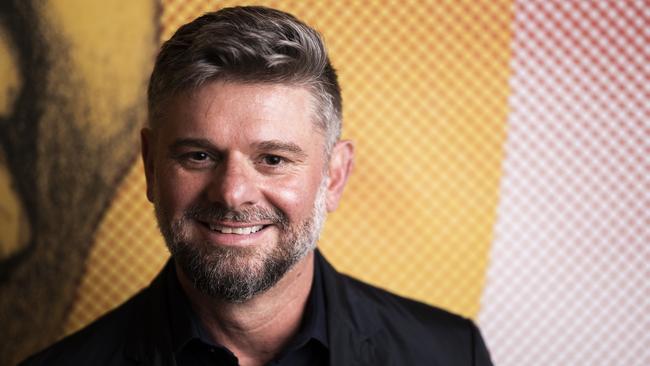
While the motif of the Ouroboros has its roots in Egyptian antiquity – most notably in the funerary texts inscribed in Tutankhamun’s tomb – the image of the serpent consuming its own tail has permeated many subsequent civilisations, most often symbolising the regenerative cycle of life, death and renewal.
Constructed in a Brisbane foundry from mirror-finish stainless steel, the Ouroboros was fabricated without an internal frame – a singular immersive structure whose innate complexity required 200 workers and specialised international expertise to realise.
Commanding the NGA’s forecourt upon a reflective pool, visitors can enter the mouth of the snake, wherein the 46,000 perforations, carved by hand, offer new perspective possibilities in recomposing the world into refractive fragments of light. And by night the perforations kindle into a galaxy of satellites – the Ouroboros revealing both the light in the darkness and darkness in the light.
“Existing to me is understanding the 10,000 things that have made up your life,” Lee suggests of a corporeal world recalibrated into dazzling shards of celestial light.
“Each of us lives under this enormous sky and it is mysterious and vast. Only 4 per cent of the universe is visitable – 96 per cent is unknowable. That is a leveller for all human beings, this sense of belonging in this vastness.”
The NGA’s $14m price tag for a stand-alone public work was always going to ensure it would prove its most controversial – rivalling the brouhaha engulfing James Mollison’s purchase of Jackson Pollock’s Blue Poles for $1.3m in 1973 (at the time the steepest price ever paid for an American work).
On the announcement of the commission in 2021, The Australian’s art critic, Christopher Allen, would declare Ouroboros an indulgence whose budget “could have made a significant difference to the collection” and “another example of the poor quality of leadership in our most important art galleries”.
Mitzevich, who describes the art of acquisition as a “methodological science”, is unapologetic. This week he announced that revitalisation plans for the National Sculpture Garden were to be led by multi-disciplinary Sydney consortium CO-AP at a cost of $60m.
Ouroboros continues Mitzevich’s ambitious agenda to enhance the NGA’s outer life in concert with its interior collections. These liminal domains have become increasingly focal threshold spaces for cultural institutions worldwide: the interface between the gallery and the everyday world beyond. This potential is certainly not lost on a boy who grew up on a farm in rural NSW, well beyond the gilded chambers of an art gallery or museum.
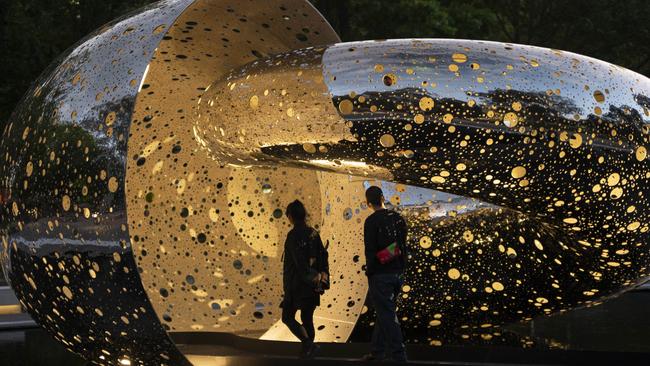
“I have a great interest in landscape, being the son of a farmer,” Mitzevich explains, citing a number of existing NGA installations – including Bert Flugelman’s Cones, Fujiko Nakaya’s ecosphere and James Turrell’s skyspace – as enduring inspirations. “When we commission a work that is in the public arena, we want to make sure the work does nurture a great sense of curiosity and imagination. The National Gallery is a continuum, and I think it’s important to take the ego out of it and build on the DNA of the past.”
For her part, Lee has – somewhat facetiously – now declared her apprenticeship complete.
“I am so grateful to have these decades up my sleeve … when you start off as an artist it’s really hard – it’s a blank canvas,” she reflects, deferring to Martin Heidegger’s Holzwege, a post-war treatise on the metaphysical path less trodden. “I am here, now what do I do? It’s just so hard to find the entry path into what will be your life’s work. (But) one’s life is made by the willingness to engage and walk with it.”
Ouroboros’s legacy may indeed prove much more than its conceptual moxie, constructed to withstand at least a couple of thousand years, at Mitzevich’s modest estimate. What sort of world will it inherit?
“We’re not sure about that,” Mitzevich concedes, “but one of the things we know is art will always be a continuum in our lives.
“Art has been a continuum in society for at least 65,000 years because we look back on time through art. Our job is to make sure we take care to protect and care for things for future generations.
“Nothing of this complexity has ever been made in Australia. It is both complicated and sublimely beautiful. Art reflects a time and a place and that helps us understand society and culture and history.”


